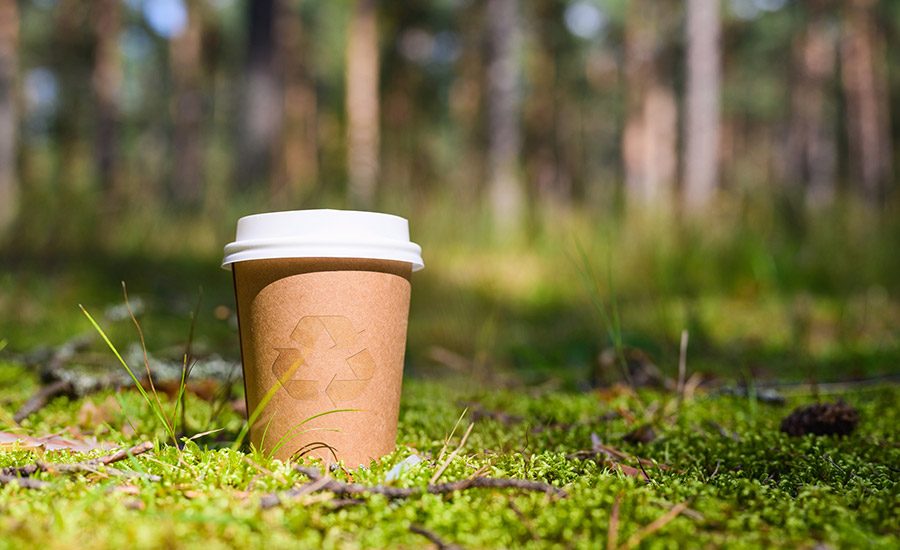Developing More Sustainable Packaging Materials
To compete in the evolving sustainability landscape, manufacturers need to invest in current technologies and new chemistries to develop products with validated sustainability claims.

Nikita Burdenkov / iStock / Getty Images Plus via Getty Images

Artfully79 / iStock / Getty Images Plus via Getty Images


Shipping and home deliveries continue to boom as more and more consumers turn to online shopping as their go-to method for purchases. In fact, the Pitney Bowes’ Parcel Shipping Index found 161 billion parcels were shipped in 2022, averaging 441 million parcels a day.1
Our increased reliance on shipping materials highlights a clear need for durable packaging materials that can withstand the journey from the warehouse to consumers. However, packaging materials must balance durability with sustainability, particularly as consumer demand continues to rise for more sustainable commerce and regulatory bodies like the European Union (EU) introduce guidelines to reduce waste caused by packaging.
Manufacturers must face the challenge of creating more environmentally friendly materials without compromising the necessary performance and durability. Examining the manufacturing process and chemistries of key materials used for packaging materials, such as latex binders, can help the industry keep up with the increased demand for parcel shipping while also meeting sustainability requirements.
Improving Manufacturing Processes
When looking at the materials used in shipping, many materials — such as paper and cardboard — have long been established as recyclable. In fact, many countries across the globe know how to collect and process these materials to make them more sustainable.
On the other hand, current latex binders found in tapes and labels are not inherently recyclable but instead can be formulated to impart sustainability characteristics onto the end product without compromising their reliability. Latex binders play a critical role in packaging applications as they impart packaging with durability and other performance properties, in turn enabling packages to make it to the consumer’s doorstep in one piece.
To further sustainability within latex binders and, in turn, improve the environmental impact of the end product, industry players should look to incorporate mass-balance procedures into their manufacturing processes. This chain-of-custody model is designed to accelerate the uptake of sustainable feedstocks in existing value chains by enabling a step-by-step transition towards renewable materials.
Manufacturers can easily trace the flow of sustainable and non-sustainable materials throughout the production of latex binders, validating the end product’s sustainability claims and allowing them to create a product that still meets performance needs. The ability to provide accurate data throughout the manufacturing process will undoubtedly help industry players understand their progress in meeting regulatory requirements.
Latex binders can also be formulated to reduce carbon emissions, with their environmental impact easily traced by product carbon footprint reports. Manufacturers can introduce more sustainable feedstocks developed under the mass-balance approach, reducing the product carbon footprint of the packaging application. Each latex binder can be designed to perform at the same level as its fossil-based counterpart.
Taking it a step further, manufacturers can look to decarbonize their operations to help improve sustainability. Decarbonization strategies allow manufacturers to transform how they use energy while also reducing their greenhouse gas emissions. Sites can be outfitted to replace thermally driven processes with renewable energy sources such as electrochemical, solar, or hydroelectric methods. Furthermore, sites can implement simple steps to reduce energy consumption, such as switching to LED lightbulbs. Reexamining a site’s energy usage and the development of latex binders is a simple way to begin making a more sustainable end product.
Introducing New Materials
Looking beyond the typical formulation of latex binders for packaging applications, there is potential to incorporate new chemistries that improve the sustainability of the end product. Bio-based feedstocks can be introduced into latex binder production and can be formulated to meet the manufacturer’s end goals. Utilizing a natural material, industry players can formulate latex binders that perform on the same level as their fossil-based counterparts. Manufacturers can adjust the level of bio-based materials to meet a company’s specific needs while also ensuring that the latex binder continues to deliver critical performance properties for packaging materials like high shear strength. The introduction of bio-based latex binders will be an especially important tool for manufacturers as we continue to learn more about the EU’s sustainability goals.
There is also the potential to incorporate recycled feedstocks into the formulation of latex binders, supporting a more circular economy and helping manufacturers align with regulatory requirements. Recent investments in chemical recycling technology can take post-consumer products, or products at the end of their lifespan, and break down the polymers within the product to extract the feedstock needed for new latex binders.
Known as depolymerization, this type of chemical recycling returns the monomers from recycled sources to their original state without the physical degradation typically caused by mechanical recycling. This allows the recycled monomer to be repolymerized to make a new latex binder while exhibiting similar performance properties of a virgin feedstock. This process works especially well when recycling styrene from post-consumer wastes such as yogurt pots and single-use packaging, and creates a recycled styrene for use in latex binder formulations.
The packaging industry should also look to the introduction of polyhydroxyalkanoates (PHA) dispersion technology. PHA is created when microbes consume organic materials and produce extra energy. This compound can then be harnessed for latex binder production and performs like a binder produced using fossil sources. Additionally, because PHA is biodegradable under the right conditions, it can further enhance the sustainable potential of the binder and end-applications. PHA dispersion has the potential to transform the packaging industry by developing materials that meet performance and sustainability needs.
Looking Ahead at Sustainability
The methods for improving the sustainability of packaging materials will remain ever-changing as industry players and consumers begin to adapt and understand new guidelines and regulations. Companies will need to keep a close eye on the changing targets set forth by governments round the world and take calculated risks as they work towards meeting these goals.
We must utilize current technologies that improve sustainability while investing in new technology and chemistries to create an even more sustainable product. Industry players must be willing to look to more bio-based and mass-balanced solutions to provide clear data on an end product’s environmental impact in a scalable manner.
Furthermore, we must look to introducing new systems that will allow for chemical recycling – technology that uses chemicals to break polymers down into smaller monomers that can be recycled into a new feedstock. While we remain uncertain of specific sustainability regulations, investing in technology now will be pivotal for future innovation within the packaging industry.
To compete in this evolving sustainability landscape, manufacturers will need to invest in current technologies and new chemistries to develop more products with validated sustainability claims. Industry players must also be willing to take calculated risks to build the infrastructure and value chain needed to support the development of sustainable products.
To learn more about Trinseo, visit www.trinseo.com.
References
1 Pitney Bowes. (n.d.). Parcel Shipping Index 2023. Retrieved from https://www.pitneybowes.com/content/dam/pitneybowes/us/en/shipping-index/23-mktc-03596-2023_global_parcel_shipping_index_ebook-web.pdf.
Looking for a reprint of this article?
From high-res PDFs to custom plaques, order your copy today!








